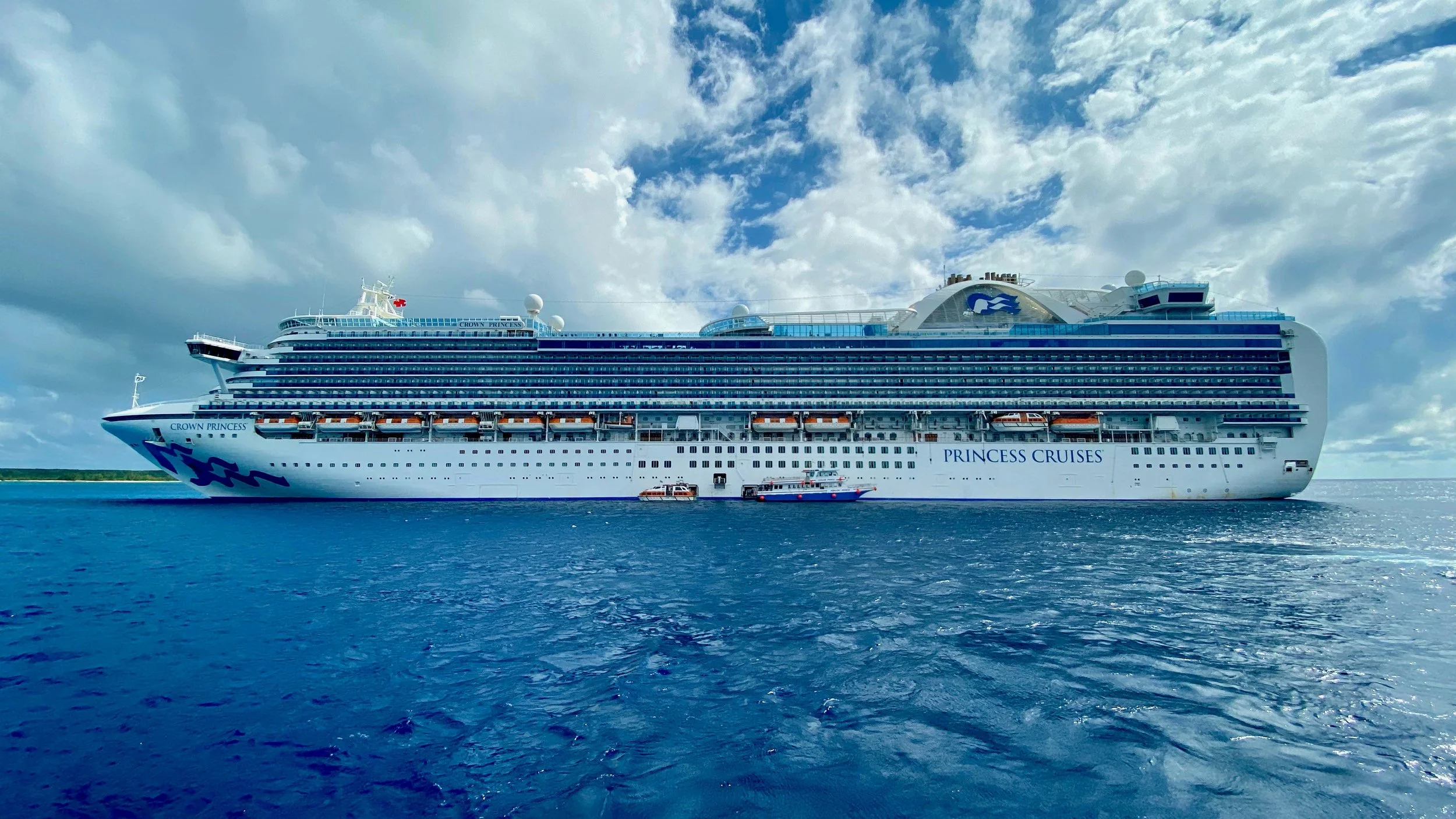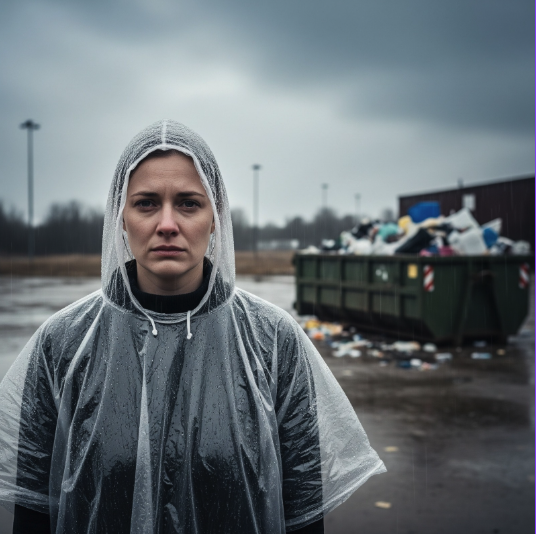Beyond The Recycling Bin: Plastic Recycling Myths
When guests face watery elements, the solution has often been the same: hand them a plastic poncho. It solves the immediate problem but creates a bigger, unspoken one: millions of single-use plastics discarded every year, most ending up in landfills.
We’ve long put our trust in recycling. Yet the uncomfortable truth is that recycling isn’t the safety net many assume it to be.
We built a quick and free Plastic Poncho Waste Calculator that illustrates what happens to plastic ponchos after they've been disposed of, showing how many are recycled, incinerated, end up in landfill, or are simply mismanaged/uncollected.
The Global Picture: Plastic Overload
Every year, humanity produces 430 million tonnes of plastic, roughly the combined weight of everyone on Earth. About 60–65% (around two-thirds) of that plastic is short-lived, used for less than five years.
Within that, approximately 139 million tonnes (about one-third of total production) are true single-use plastics. To put that in perspective, that’s enough to fill 55,000 Olympic-sized swimming pools or to cover about 20,000 football fields one meter deep.
If current trends continue, by 2050 the mass of plastic in the oceans could exceed the total mass of marine life, and by 2060, global plastic production is projected to nearly triple, reaching 1.23 billion tonnes annually.
1,178 Empire State Buildings
weigh the same as the amount of plastic produced every year.
1,390 Cruise Ships
weigh the same as the amount of single-use plastic produced every year.
If those number are hard to fathom, try picture 104 million barrels of oil. In 2024, global oil consumption reached 104 million barrels a day, with 16% diverted into petrochemicals like plastic. By 2040, plastic alone could consume 20 percent of the world’s oil production.
Despite this staggering input, our output tells a bleak story: only 9% of plastic is recycled annually. The remaining 91% is either incinerated (19%), sent to landfills (50%), or leaks into the environment (22%). Even when plastics are “reused,” up to 98% are merely downcycled into lower-grade products that eventually degrade and leak into the environment. The system isn't circular; it's a slow, one-way conversion of fossil fuels into permanent waste.
The Plastic Paradox: Why Recycling Isn’t the Answer
Recycling has long been promoted as the solution to plastic waste, but in reality it barely makes a dent.
Economics are one of the biggest obstacles. Virgin plastic is so cheap to produce that recycled material rarely stands a chance, locking us into an endless cycle of new production no matter how much we place in the recycling bin.
Infrastructure adds another barrier. Plastics are not a single material but a family of chemically distinct types such as PET, HDPE, PP, PVC, and LDPE. They do not mix well, and even a trace of the wrong type can spoil an entire batch. Add food contamination or products made from mixed polymers and many “recyclable” items end up in landfill instead.
The challenge runs even deeper. Plastics contain around 16,000 known chemicals, at least 4,200 of which are hazardous to human health or the environment. This complexity makes true recycling nearly impossible and ensures plastic waste continues to pose risks long after its single use is over.
Charting a New Course: From Waste Management to Waste Prevention
For decades, we have placed our faith in recycling bins and “recyclable” labels, believing that these items will be continuously renewed. But relying on recycling is like trying to drain an overflowing bathtub with a teaspoon. It gives the illusion of progress while the flood only worsens.
The numbers are sobering. In a single year, humanity produces as much plastic as we collectively weigh. Two-thirds of that plastic is single-use, and only 9% is successfully recycled.
This is not a failure of good intentions but the predictable outcome of a broken system. The recent Global Plastics Treaty negotiations in Geneva underscored this reality. After 11 days, world leaders failed to reach a deal, raising concerns over delays in addressing the global plastic pollution crisis.
Which brings us to a critical truth: true sustainability will not come from managing waste after the fact. It must come from preventing waste in the first place.
The issue of plastic ponchos, while specific, illustrates the larger systemic crisis. Cheap, disposable, and almost always single-use.
Guests often keep ponchos as souvenirs, a popular choice among tourists, but these items are still likely to be discarded later. Even clearly marked bins depend on proper collection, sorting, and processing, all factors outside an operator’s control.
The result is a relentless cycle of production, single-use, quick disposal, and a hopeful yet imperfect attempt at recycling. This cycle drives constant demand for new plastic ponchos, locking us further into dependence on finite fossil fuels.
Introducing the Bio Poncho: From Nature to Nature
The Bio Poncho offers a truly plastic-free, circular alternative. Made from 100% cornstarch, it is more durable, breathable and more comfortable than standard plastic ponchos, encouraging reuse.
Once disposed of, it doesn’t linger for centuries or break into microplastics. Instead, it naturally returns to its organic components like water and CO₂ completing a genuine “from nature to nature” cycle.
That means no harmful chemicals, no microplastics, and no contribution to the plastic waste crisis. The Bio Poncho eliminates the plastic poncho problem entirely, and addresses sustainability at its root.
A Story Guests Will Share & Be Proud Of
Beyond its environmental benefits, the Bio Poncho strengthens a brand’s image where it matters most—in the eyes of your guests.
Today’s visitors are quick to notice and celebrate destinations that make meaningful, responsible choices. Travel bloggers, influencers, and everyday guests consistently highlight attractions that take sustainability seriously. At the same time, they are often even quicker to call out companies that fall short of these expectations.
The Bio Poncho serves as a visible, point-of-sale demonstration of your commitment to sustainability and environmental responsibility. Guests notice it, appreciate it, and in doing so become authentic advocates, organically reinforcing your brand and reputation.
It’s the countless stories, photos, and posts from visitors who leave not only dry but impressed by an organization that truly cares about the planet and takes active steps to be part of the solution, not the problem.





